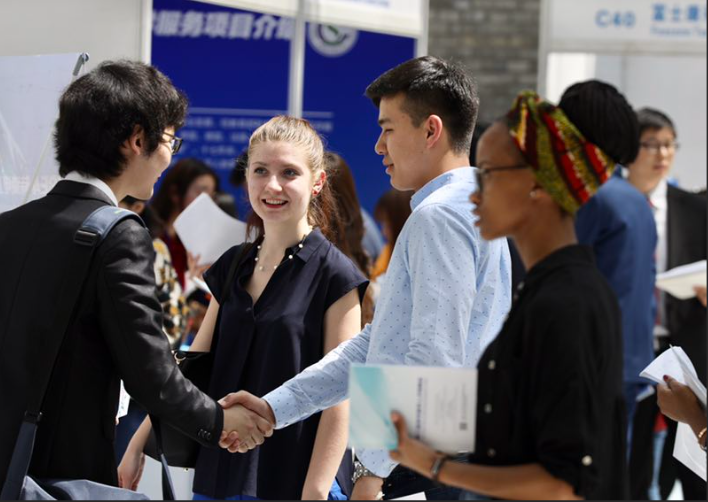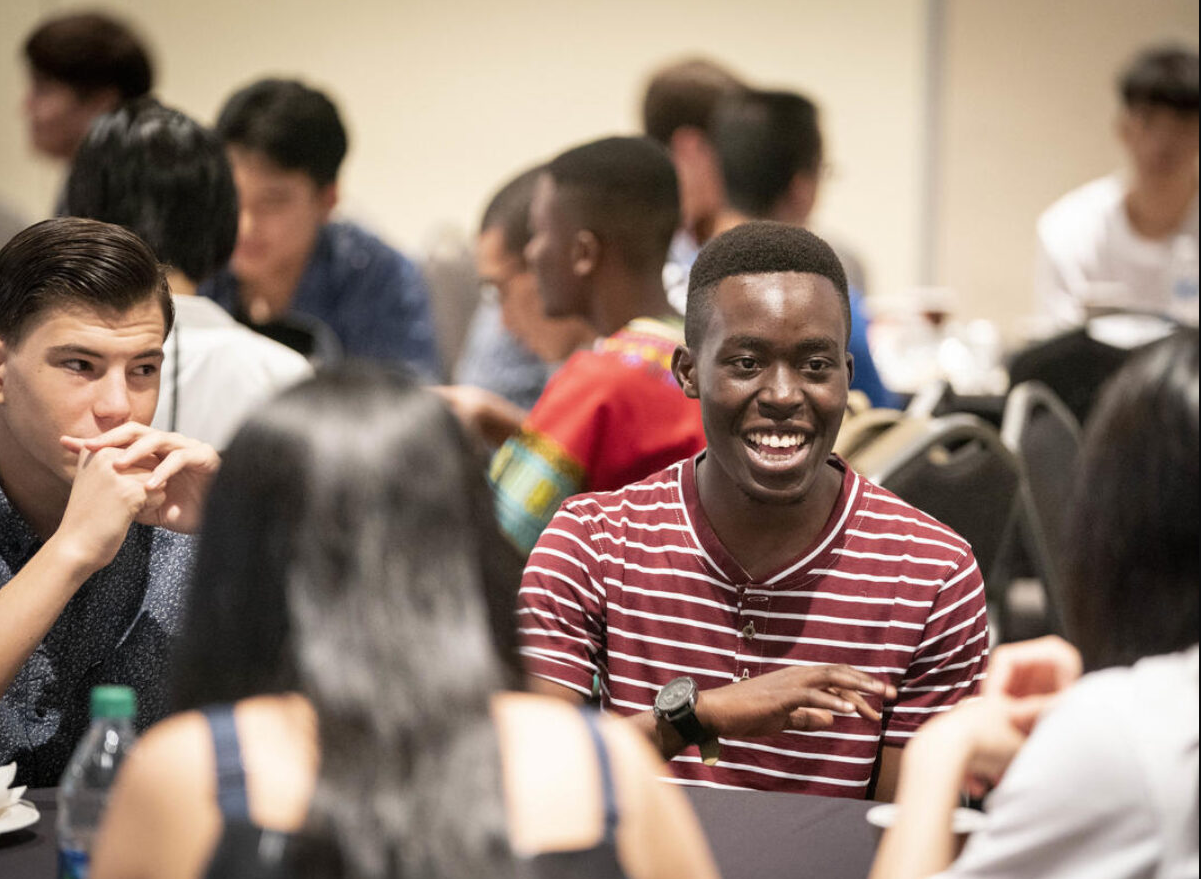What is CPT vs OPT? Many international students may be familiar with them. If you want to legally work in the United States with an F-1 visa, so as to gain some work experience and consolidate what you have learned in school, there are two common ways to choose: Curricular Practical Training (CPT) and Optional Practical Training (OPT).
Generally speaking, the CPT must be completed before graduation, while the OPT can be completed before and after graduation. However, how they differ and how to apply, will be detailed in the following content.
What is CPT?
What does CPT stand for? It stands for Curricular Practical Training.
The CPT meaning is an opportunity for US visa holders (usually F-1 student visas) to gain practical work experience during their academic program. This internship or work experience must be relevant to the student’s major or program and is usually intended to provide practical, applied experience that connects to what they have learned.
Employers should have an agreement with your university, thus they can offer you part-time or full-time work. If you work full-time for 12 months on CPT, you’ll lose your eligibility for OPT. However, working part-time on CPT won’t disqualify you from OPT.
What is OPT?
What does OPT stand for? It stands for Optional Practical Training.
The OPT meaning refers to Optional Practical Training. It is a work opportunity program, granted by USCIS (United States Citizenship and Immigration Services), for international students holding an F-1 visa. This program allows them to work and gain practical career experience in the United States after completing an undergraduate degree or above. If you apply for OPT before graduation, it is called Pre-Completion OPT (which will take up the OPT time), and if you apply after graduation, it is called Post-Completion OPT.
If you have a science, technology, engineering, or math (STEM) degree, you are eligible to apply for an additional 24-month OPT extension.
CPT vs OPT: What's the difference?
CPT and OPT have some similarities. For example, they both require that students with F-1 visas can apply, and they both require that jobs should be related to students’ majors. However, there are many differences between them. The major difference between CPT and OPT is the time period. The CPT must be completed before graduation, while the OPT can be completed before and after graduation. There are many other differences, and our chart below provides a quick guide to understanding the differences of OPT vs CPT.
| Items | CPT | OPT | |
|---|---|---|---|
| Pre-completion OPT | Post-completion OPT | ||
| Who can apply? | International students on a F-1 visa who have enrolled for at least one full academic year | International students on a F-1 visa who have enrolled for at least one full academic year | |
| When can you participate? | Before graduation | Before graduation | After graduation |
| Job nature | Part time; Full-time employment is only available during school holidays |
Part time; Full-time employment is only available during school holidays |
Part time; Full time |
| Who authorizes your practical training? | Your DSO | After your DSO’s recommendation, USCIS.gov will authorize your OPT | |
| Related course registration | Students must enroll in courses related to employment or experience | No course registration required | |
| Do you need to have a job lined up before your DSO authorizes or recommends practical training? | Yes | No | |
| Is it employer-specific? | Yes. And it is a part of your curriculum | No. Students can work for any employer, as long as the position is related to their field of study | |
| Validity | Work only within the time frame recommended by CPT on Form I-20 and allowed in SEVIS | Work within the validity period of the EAD card | |
| Is it eligible for STEM extension? | No | No | Yes. STEM degree graduates can apply for a 24-month OPT extension |
CPT vs Pre-completion OPT: What's the difference?
Both CPT and pre-completion OPT are available before graduation, so what is the difference between them?
- CPT: Before applying, you need to have the employer’s offer, and the application time is fast, generally 5 working days to get it. Pre-completion OPT: It does not require a job offer before applying, but the process takes a bit longer.
- CPT: It will not take up time on post-completion OPT (as long as the cumulative work time of the CPT does not exceed 12 months). Pre-completion OPT: It will take up the amount of time of OPT. For example, if you have spent 10 months on pre-completion before graduation, the length of application for post-completion OPT will only be 12-10=2 months.
- CPT: Some schools do not require one academic year of admission before application. Pre-completion OPT: It requires one academic year of admission before application.

CPT application
Typically, it is required to attend school for a certain period of time and hold an F-1 visa to be eligible for CPT. Here are some things about applying.
Application procedures
Application procedures vary from school to school, so please check your university’s website for the latest information. Here are some general steps to apply for a CPT for F1 student.
Contact your university’s advisor or dean to find out what CPT programs are available at your university.
Prepare your materials and information, and fill out the CPT application form.
Register for CPT credit courses (optional).
Look for employers and get an offer related to your major.
Provide an official offer letter for your CPT internship. You must list the company name, address, position, job description, hours per week, start dates, and contact information of your manager.
Download the latest I-94 record.
Submit a CPT application through the International Student Office, and make sure to plan and prepare the required documents as early as possible as it takes time to approve the authorization.
When the CPT application is approved, you will receive an I-20 with the start and end dates of the CPT.
Start the CPT internship after the start day.
CPT requirements
To apply for CPT, you need to meet the following requirements:
- Have valid F-1 visa.
- Have completed at least 1 year of full-time study in the United States (unless the applicant is a graduate student and their program requires immediate CPT).
- The content of CPT internship is related to the applicant’s major.
- CPT cannot be started before the start date of the current I-20.
- Hold a valid internship offer from your employer.
- If required by the university, you need to have already registered for CPT credit courses.
OPT application
In short, students with F-1 visas can work off-campus during or after the completion of their academic program in the form of Optional Practical Training (OPT). The application must comply with USCIS employment regulations and be approved by USCIS and the university’s Office of International Students.
Application procedures
How to apply for OPT? The procedures are as follows:
- First, obtain the OPT application form from the International Student Affairs Office of your university.
- Ask your supervisor or teacher to fill out the recommendation form.
- Fill out the university’s relevant forms and Form I-765.
- After submitting your application to the Office of International Student Affairs, please complete a new Form I-20 reissued by the staff.
- Keep copies of all application documents.
- Send all documents to the following address (preferably by registered mail):
- United States Citizenship and Immigration Services
- Eastern Service Center
- 75 Lower Welden Street
- St.Albans, VT05479-0001**
Documents to be sent
- Form I-765
- Copies of Page 1 and page 3 of the SEVIS I-20 Form (with a letter of recommendation from the school’s Office of International Affairs Supervisor)
- Copy of the front and back of the I-94 Card
- Two passport photos (name and enrollment number written in pencil on the back of each photo and placed in an envelope, attached to the application form)
- Passport with a copy of the personal information page, including the passport extension record page
- Copies of all previously issued I-20 Forms
- Copy of previous OPT card or other work card (EAD)
- Fee: $340 (check to USCIS or remittance or personal check, no cash included)
OPT requirements
To apply for OPT, you need to meet the following requirements.
The internship must be related to the student’s major.
Have a valid F-1 visa.
Apply for an internship before completing your studies.
You are not eligible to apply for anOPT, if you have completed a CPT of 12 months or more.
Students are eligible for an additional 12 months of OPT authorization when they change to a higher educational level.
CPT or OPT: How to choose?
CPT vs OPT can offer invaluable opportunities for gaining practical work experience in students’ fields of study, enhancing their professional skills, and boosting their employability in an increasingly competitive job market. With our guide to the definitions, eligibility requirements, and application procedures of CPT vs OPT, you can make informed decisions that align with your career aspirations. Whether you’re in the early stages of your academic journey or nearing the completion of your studies, this comprehensive blog will equip you with the knowledge needed to leverage CPT and OPT effectively and unlock your full career potential.
FAQ
The major difference between CPT and OPT is the time period. The CPT must be completed before graduation, while the OPT can be completed before and after graduation.
Yes.
International students can participate in both CPT and OPT, but specific guidelines must be followed. For students who want to have extensive work experience, a combination of part-time CPT during their studies and post-completion OPT might offer an optimal pathway.
Part-time CPT allows students to work up to 20 hours per week, while with a full-time CPT permit, students can work more than 20 hours per week. One thing should be noted: if one engages in 12 months or more of full-time CPT, he/she is not eligible for OPT.
12 months.
However, if you are a student who has received a science, technology, engineering or mathematics (STEM) degree at an undergraduate level or higher and seek a training opportunity related to this degree, you can apply for the 24-month STEM OPT extension as long as you meet other requirements.
In most cases, CPT is paid. Students can receive valuable work experience and salaries or hourly wages, helpful with their tuition and living expenses.
Sometimes, CPT is unpaid. It only provides students with the necessary experience and skills in their field. Unpaid CPT must comply with US employment regulations, align with students’ academic goals and prevent exploitation.
OPT is the same as CPT.
In most cases, OPT is paid. Students can receive valuable work experience and salaries or hourly wages, helpful with their tuition and living expenses.
Sometimes, OPT is unpaid. It only provides students with the necessary experience and skills in their field. Unpaid CPT must comply with US employment regulations, align with students’ academic goals and prevent exploitation.
You are not required to provide a job offer when applying for OPT.
Students are required to find employment within 90 days.
If students cannot find a job within 90 days, there is a 60-day grace period provided to students preparing to leave the US.
You can’t work with CPT during the gap. CPT is part of the curriculum. Students need to register for a special CPT course and pay tuition. After completing CPT, they will get corresponding credits. In addition, not all majors have CPT settings, you need to consult your academic advisor. If a CPT works full-time for more than 12 months there will be no OPT after graduation.
In general, CPT will not affect OPT if CPT is authorized for less than 12 months of full-time work. If your full-time CPT duration is 12 months, you will not be able to apply for OPT. However, part-time CPT will not be deducted from OPT.
Yes, you can.
CPT is available for each level of education you pursue, and students may request multiple CPT authorizations during each level. However, please remember that the total time of full-time employment cannot exceed 12 months, otherwise, you will not be able to apply for OPT.








